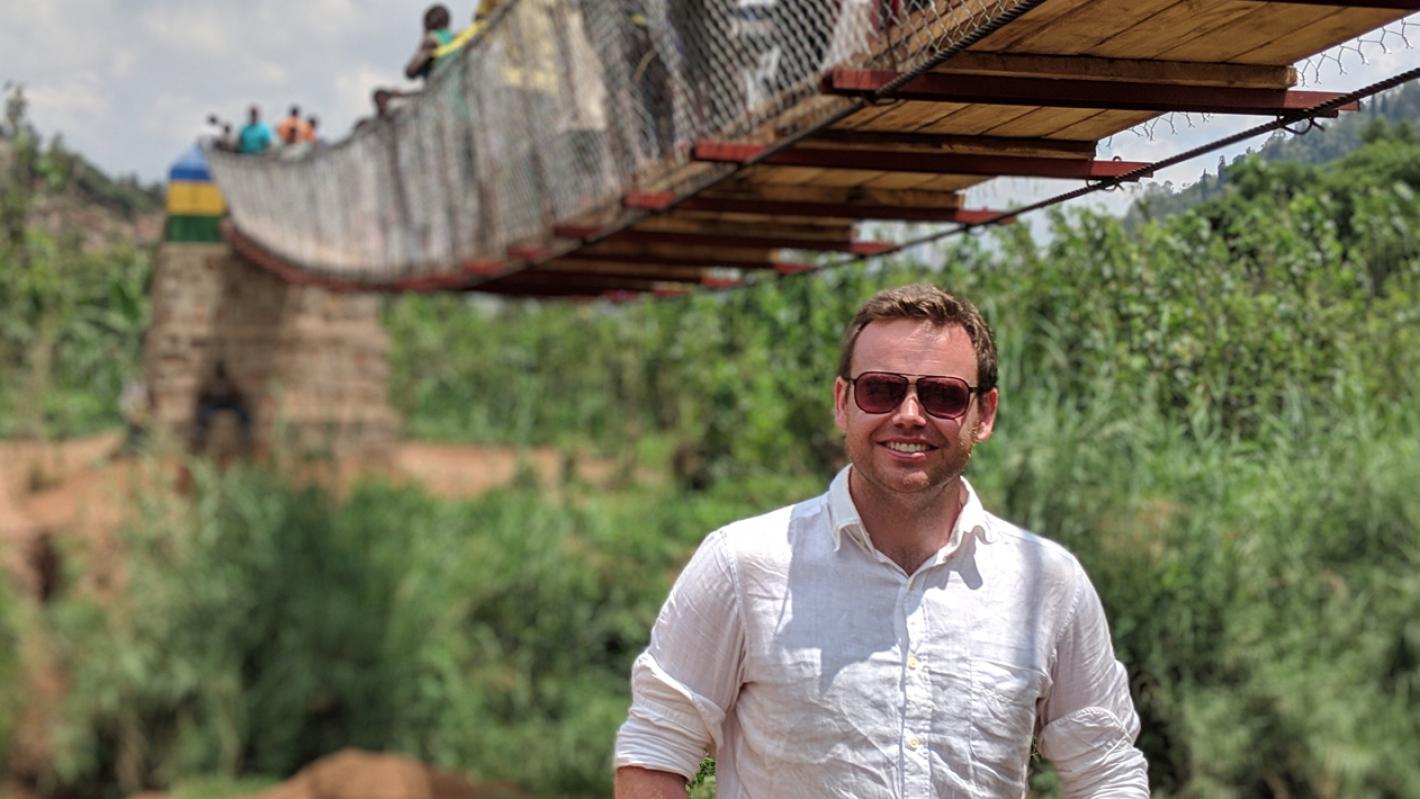
ROD Senior Engineer, Andrew O'Connell
Andrew O'Connell describes how, by leveraging his skills as a bridge engineer, he made a life-changing difference to the lives of villagers in an isolated, rural community in Rwanda
The Gatare Bridge project began in July 2018 when Europengineers, in collaboration with Bridges 2 Prosperity (B2P), decided to send an industry team to build a footbridge for villagers in an isolated, rural community in Rwanda.
The ten-strong project team was drawn from Europengineers companies, namely, Basler & Hoffman, BuroHappold, Setec, Pondio Ingenieros, Salfo & Associates SA and ROD.
Our task was to travel to Nyarugenge Municipality in the Kigali Province and build a 37-metre suspended bridge over the Yanza River, which floods 90 to 180 days of the year, cutting off local access to critical resources.
The purpose of the new bridge is to provide the Gasiza and Rubonobono communities with safe passage across the river and year-round access to the local market, health clinic and primary school.
Following several weeks of planning and preparation, our project team arrived in Nyarugenge on Sunday, 3 November.
Our goal was to complete the bridge by Friday, 16 November, so we wasted no time in hiring two jeeps at the airport before setting off to buy provisions at the local market.
After a short stop at the bridge site, we made our way to the place we would call ‘home’ for the next twelve days.
Our accommodation was basic, and while we were luckier than most in that we had beds and electricity, we had no water.
Work on site began on Monday, 4 November.
As team construction lead, I was responsible for developing the daily work plan and overseeing the activities of both the industry team and the local community staff working on the construction site.
Communication was one of the first challenges we faced. Many of the locals had very little English, if any, while only three of our own team spoke English as their first language.
Thankfully, with some help from the B2P staff on the ground, the two teams integrated well, and the local volunteers participated fully in every phase of the construction. This was very important because the locals will have responsibility for the operation and maintenance of the bridge going forward, and familiarity with the bridge components and the process behind their construction will make this task much easier.
During our first morning on site, we discovered that the bridge design had changed while we were en route to Rwanda and that the appropriate bridge cables would not arrive onsite until that afternoon.
We also realised that, due to the height of the abutment, we could not set up the level within the boundaries of the site. Instead, it had to be set up on a road adjacent to the site so we could view the centre of the span and the abutment, where the desired cable sag was marked.
The cables had to be pulled manually with a winch at one end to achieve the desired cable sags at mid-span. To facilitate the release of the winch, the cable sag had to be set above the desired level so that when cable sagged from the release of the winch, the cable wouldn’t sit below the desired level. This took several attempts before it was achieved.
By the end of our second day on site, the cables had been set and the deck cross beam preparation was well underway. This allowed us to start to grout and tar the cables in the dead end abutment (the side opposite where the cables had been pulled from) and start the backfilling.
The backfilling was a manual process and involved physically lifting all the big and small stones on site and placing them in the abutment.
The next step involved mixing the concrete for the dead end abutment approach slab in an area of the site affectionately known as ‘the pit’. In one afternoon alone, we succeeded in mixing and placing almost 5.5 metres of concrete, in temperatures in excess of 30 degrees.
The concrete delivery system was very primitive. It consisted of filling a plastic watering can, which we had split into two to form two separate trays, with concrete and then delivering it to the desired location on the abutment.
By the end of our first week on site, and in spite of the intense heat and rudimentary equipment, we had made more progress than originally anticipated.
We decided to take the weekend off, so we headed to Lake Kivu in South West Rwanda to relax and reacquaint ourselves with running water. It was just the recharge we needed for our second week on site.
On our way back to Kigali, we stopped by the Dian Fossey Gorilla Fund International centre in North West Rwanda, where we learned about their efforts to protect the country’s mountain gorillas from threats to their survival.